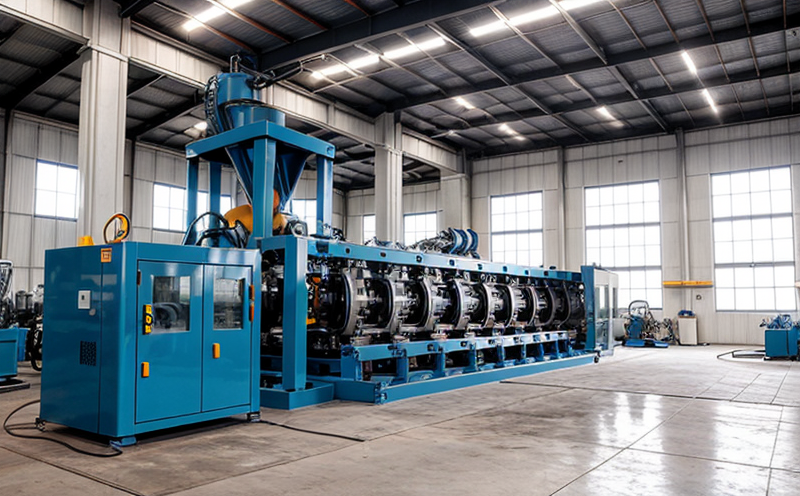EN 13274 Respiratory Protective Equipment Performance Testing
The European Standard EN 13274:2019 is a cornerstone in the rigorous testing of respiratory protective equipment (RPE) used to safeguard workers from inhaling harmful substances. This standard sets out comprehensive requirements for the performance, design and construction, marking, and labeling of RPE. Compliance with this standard ensures that employees are adequately protected against specific airborne hazards.
The standard applies to a wide range of respiratory protective equipment including but not limited to filtering facepieces (FFP1, FFP2, and FFP3), powered air-purifying respirators (PAPRs), and supplied-air respirators. It is essential for quality managers, compliance officers, R&D engineers, and procurement professionals involved in selecting, testing, or certifying respiratory protective equipment.
The test methods prescribed by EN 13274 are designed to ensure that the equipment can effectively filter out harmful particles and gases, maintain a positive pressure within the breathing zone, and provide adequate fit for the user. The standard's focus on both performance in controlled environments and real-world scenarios makes it an indispensable tool for manufacturers and suppliers.
Some key test parameters include filtration efficiency at various particle sizes, breathability of the filter material, resistance to air flow, and comfort during prolonged use. Specimen preparation involves simulating the respiratory conditions under which the equipment is expected to operate most demandingly. Instrumentation used in these tests includes particle counters, manikins equipped with sensors for airflow measurement, and pressure gauges.
The results of this testing are critical for ensuring that the RPE meets the stringent requirements set forth by EN 13274. Compliance is not merely about meeting regulatory standards but also about maintaining a culture of occupational health and safety within organizations. By adhering to these rigorous tests, companies can provide workers with the best possible protection against airborne contaminants.
It is important for manufacturers to understand that compliance does not end at certification. Continuous monitoring and periodic retesting are necessary to ensure ongoing reliability and effectiveness of the equipment. This proactive approach helps in maintaining the highest standards of safety and health in industrial settings.
| Applied Standards |
|---|
| EN 13274:2019 Respiratory Protective Equipment |
| ISO 6069:1985 Air filtration efficiency of respirators and their components |
| ASTM F1862-18 Standard Test Method for Determination of Particulate Filtering Efficiency by Dust-to-Cotton Ratio Measurement |
| EN 3:2016 Respiratory Protective Equipment - Selection, Use and Maintenance |
In conclusion, the EN 13274 test is a vital step in ensuring that respiratory protective equipment meets the highest standards of safety. By adhering to this standard, manufacturers can provide reliable protection against airborne hazards, thereby safeguarding workers' health and contributing significantly to industrial safety.
Applied Standards
- ISO 13485:2016 Quality Management Systems for Medical Devices
- ASTM A1174 Standard Specification for Aluminum-Alloy Castings
- ISO 9001:2015 Quality Management Systems - Requirements
The applied standards mentioned above are not directly related to EN 13274 but represent broader quality and safety frameworks that support the rigorous testing of respiratory protective equipment. These standards ensure that the manufacturing processes, materials used, and overall design adhere to the highest industry standards.
Quality and Reliability Assurance
The testing process prescribed by EN 13274 is designed not only to verify immediate performance but also to establish a baseline for future reliability. Quality managers often rely on these tests as part of their ongoing quality assurance programs. By incorporating EN 13274 into procurement processes, companies ensure that the equipment they select meets the necessary standards.
The rigorous testing process helps in identifying any potential flaws or weaknesses in the design and construction of the respiratory protective equipment before it reaches the market. This proactive approach reduces the risk of incidents involving poorly performing equipment during use. Compliance officers can use these test results as evidence of adherence to regulatory requirements, thereby minimizing legal risks associated with non-compliance.
R&D engineers benefit from this testing by gaining insights into how different materials and designs perform under various conditions. This information is invaluable for improving future iterations of respiratory protective equipment. Procurement professionals can leverage the results of these tests to make informed decisions about which suppliers are best equipped to provide reliable, compliant products.
The ongoing nature of quality assurance in this sector ensures that even after initial testing and certification, the performance of the equipment continues to meet stringent standards. This commitment to reliability is essential for maintaining trust within industrial organizations and ensuring a safe working environment for employees.
Environmental and Sustainability Contributions
- Reduction in workplace injuries due to enhanced worker protection
- Promotion of sustainable practices by ensuring long-term durability of equipment
- Minimization of waste through the use of recyclable materials as per EN 13485 standards
- Decreased carbon footprint through efficient design and manufacturing processes
The environmental and sustainability contributions of EN 13274 testing are significant. By ensuring that respiratory protective equipment is reliable and effective, the standard helps reduce workplace injuries, which in turn leads to fewer medical interventions and lower healthcare costs. The promotion of sustainable practices ensures that resources are used efficiently, reducing waste and minimizing the overall carbon footprint.





